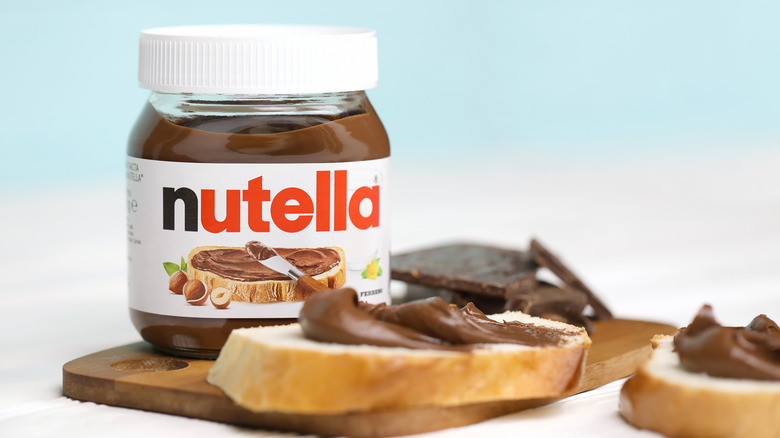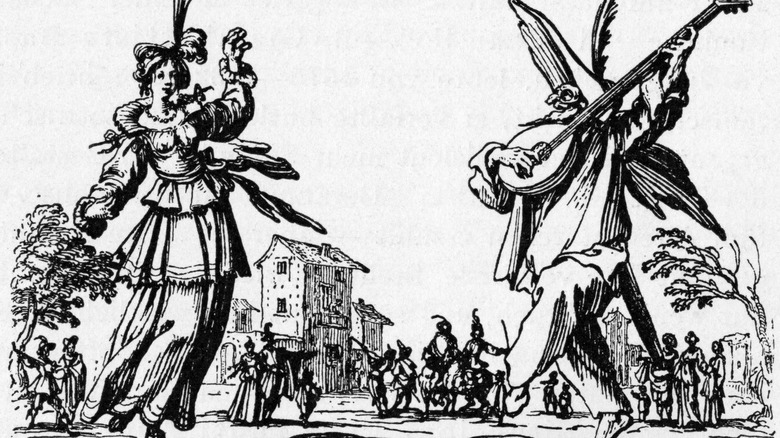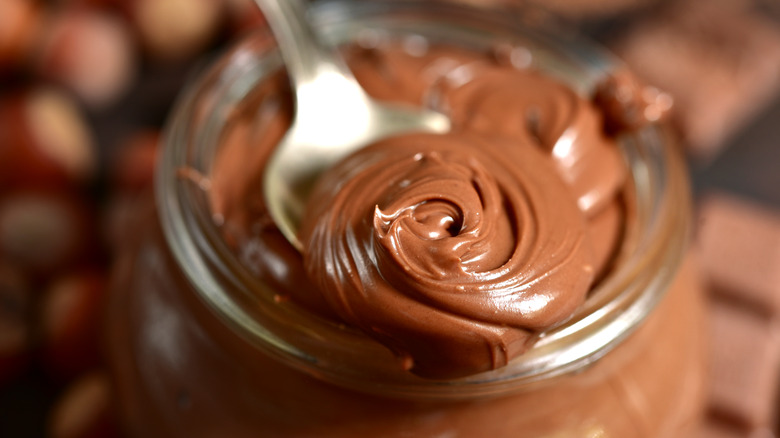What Is Gianduia And What Does It Have To Do With Nutella?
Brace yourself. Nutella has a food relative, so to speak, with a hyped reputation for being even more delicious than the famous chocolate hazelnut spread.
Gianduia, or gianduja, is also a chocolate hazelnut treat, but it comes with a few value judgments that position it as a more sophisticated, mature member of the Nutella family tree. It's certainly a good deal older, darker, and nuttier. It's what Nutella descended from, to continue the metaphor, in our opinion.
More niche and less well known though gianduia may be, the sweet and sticky confection called gianduia (pronounced jan-doo-yah) is what legends are made of. It's usually made with dark chocolate and at least 30% hazelnuts.
Religion, theater, and history intertwine in the story of this delectable food that is still popular, though on a smaller scale, today. Fascinating backstory aside, much of gianduia's origin story, in fact, might be just that — legends. Nutella became the famous family star, so to speak, while gianduia stayed closer to home, but gianduia walked so Nutella could run.
What's in a name
Gianduia, put simply, is a sticky chocolate hazelnut paste with deep roots in the Piedmont region of Italy, where hazelnuts abundantly grow. In commedia dell'arte, a character named Gianduia represented the Piedmont area, and the mask worn to represent that character even became the official Carnival mask in Turin, Piedmont's capital. Cut to 1865 and a legendary story says Caffarel, a manufacturer of a new form of Gianduia, used Carnival as the occasion to have people dressed as the commedia dell'arte character to pass out morsels of the sweet. Gianduia's costume is even said to have worn a brown coat lined in red, much like the characteristic brand colors for Nutella today.
Hazelnuts themselves are closely identified with the Piedmont region, and the nuts are part of other famous Italian desserts, but at some point in the 1800s, they were combined with cocoa powder and chocolate in varied forms. Popular even as a loaf to be sliced and spread on bread as a snack in early forms, the recipe was made to be more easily spreadable by Ferrero and marketed as Supercrema, at which point the famous hazelnuts were roasted before they were combined with chocolate, sugar, and oil. Suprecrema's more affordable component parts made the final thing cheaper than chocolate, which was helpful for a post-war population struggling to afford luxuries. A rebrand eventually gave new life to Supercrema creating the new name – Nutella — in 1964.
Legends of Piedmont
The legend of Gianduia's creation, disputed by some, is that Italian chocolatiers in Piedmont were spurred to find creative ways to stretch chocolate with affordable local ingredients because of Napoleon's restrictions on trade with the United Kingdom. Taxes on cocoa were a problem, says the legend, and local hazelnuts were the solution.
Though that tale is often repeated, some say the story does not line up with the development of chocolate in historical fact. Religious tolerance enacted by Napoleon, however, likely did play a role in the creation of gianduia and, by extension, the eventual creation of Nutella. Protestants were safe to come into Catholic cities and left their surrounding valley homes to unite with the craftsmen, eventually joining together to create gianduia. From these times long past, Nutella was born.
Today, Nutella's parent company, Ferrero, claims a fourth of the hazelnuts in the world for their own operations, and two jars of Nutella were sold every five seconds according to Nutella statistics from 2017. Countless pages have been dedicated to the many ways to enjoy Nutella, too. Statistics on sales of gianduia, in contrast, were not readily available at the time of this writing.


